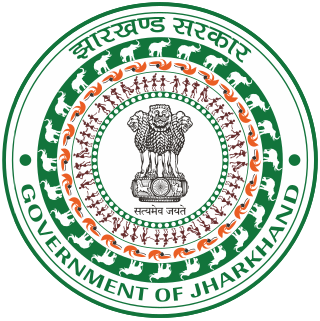Politics of India works within the framework of the country's Constitution. India is a parliamentary secular democratic republic in which the president of India is the head of state & first citizen of India and the Prime Minister of India is the head of government. It is based on the federal structure of government, although the word is not used in the Constitution itself. India follows the dual polity system, i.e. federal in nature, that consists of the central authority at the centre and states at the periphery. The Constitution defines the organizational powers and limitations of both central and state governments; it is well recognised, fluid and considered supreme, i.e. the laws of the nation must conform to it.
India has a parliamentary system as defined by its constitution, with power distributed between the union government and the states. India's democracy is the largest democracy in the world.

Naveen Patnaik is an Indian politician who served as the 14th Chief Minister of Odisha from 5th March 2000 to 12 June 2024. His 24-year reign is the second longest for a chief minister of any Indian state, after Pawan Kumar Chamling of Sikkim. He is the first president of the Biju Janata Dal since 1997. He served as the Union Minister of Steel and Mines from 1998 to 2000 and a member of the Lok Sabha from Aska from 1997 to 2000.

Bhagat Singh Koshyari is an Indian politician who served as the 22nd governor of Maharashtra from 2019 to 2023. An RSS veteran, Koshyari served as National Vice-President of BJP and party's 3rd State president for Uttarakhand. He also served as 2nd Chief Minister of Uttarakhand from 2001 to 2002 and thereafter, was the leader of the opposition in the Uttarakhand Legislative Assembly from 2002 to 2003. He also served as an MLC in Uttar Pradesh Legislative Council and MLA in Uttarakhand Legislative Assembly. He later served as an MP in Rajya Sabha from 2008 to 2014 from Uttarakhand and then the MP in the 16th Lok Sabha from Nainital-Udhamsingh Nagar constituency, earning him the distinction of being elected in both houses of State Legislature and both houses of National Parliament respectively.
The Government of Uttar Pradesh is the subnational government of the Indian state of Uttar Pradesh with the governor as its appointed constitutional head of the state by the President of India. The Governor of Uttar Pradesh is appointed for a period of five years and appoints the Chief Minister of Uttar Pradesh and their council of ministers, who are vested with the executive powers of the state. The governor remains a ceremonial head of the state, while the chief minister and their council are responsible for day-to-day government functions.

The Government of Bihar or Bihar Government is the state government of the Indian state of Bihar and its nine divisions which consist of 38 districts. It consists of an executive, led by the Governor of Bihar, a judiciary and legislative branches.

Government of Chhattisgarh also known as the State Government of Chhattisgarh, or locally as State Government, is the supreme governing authority of the Indian state of Chhattisgarh and its 33 districts. It consists of an executive, led by the Governor of Chhattisgarh, a judiciary and a legislative branch.

The Government of Gujarat, also known as GujaratGovernment, is the supreme governing authority of the Indian state of Gujarat and its 33 districts. It consists of an executive of the legislators appointed by the Governor of Gujarat, a judiciary and of a publicly elected legislative body.

The Government of Jharkhand also known as the State Government of Jharkhand, or locally as State Government, is the supreme governing authority of the Indian state of Jharkhand and its 24 districts. It consists of an executive, led by the Governor of Jharkhand, a judiciary and a legislative branch.
Government of Madhya Pradesh also known as the State Government of Madhya Pradesh, or locally as the Madhya Pradesh Government, is the supreme governing authority of the Indian state of Madhya Pradesh and its 55 districts. It consists of an executive, led by the governor of Madhya Pradesh, a judiciary and a legislative branch. In 2000, the southern portion was broken off to form the new state of Chhattisgarh with its own government.
The Government of Nagaland also known as the State Government of Nagaland, or locally as State Government, is the governing authority of the India state of Nagaland and its 16 districts. It consists of an executive, led by the Governor of Nagaland, a judiciary and a legislative branch. Kohima is the capital of Nagaland, and houses the Vidhan Sabha and the secretariat.
The politics of Odisha are part of India's federal parliamentary representative democracy, where the union government exercises sovereign rights. Certain powers are reserved to the states, including Odisha. The state has a multi-party system, in which the two main parties are the nationalist Bharatiya Janata Party (BJP) and the regional, socialist Biju Janata Dal (BJD). The Indian National Congress (INC) has also significant presence.

Ranganath Mishra was the 21st Chief Justice of India, serving from 25 September 1990 to 24 November 1991. He was also the first chairman of the National Human Rights Commission of India. He also served as Member of Parliament in Rajya Sabha from the Congress Party between 1998 and 2004. He is the second Supreme court judge to become a Rajya Sabha member after Baharul Islam who was also elected as Indian National Congress member.
Tamil Nadu has a parliamentary system as defined by its constitution, with power distributed between the state government and the districts.
State governments in India are the governments ruling over 28 states and 8 union territories of India and the head of the Council of Ministers in a state is the Chief Minister. Power is divided between the Union government and state governments. While the Union government handles defence, external affairs etc., the state government deals with internal security and other state issues. Income for the Union government is from customs duty, excise tax, income tax etc., while state government income comes from sales tax (VAT), stamp duty etc.; now these have been subsumed under the various components of the Goods and Services Tax

Elections in the state of Bihar, India are conducted in accordance with the Constitution of India. The Assembly of Bihar creates laws regarding the conduct of local body elections unilaterally while any changes by the state legislature to the conduct of state level elections need to be approved by the Parliament of India.

Ananga Udaya Singh Deo, also known as A U Singh Deo is a politician from Odisha, India. He is elected to the Rajya Sabha in 2014 from Odisha.

Sarojini Hembram is an Indian politician from the Odisha state. She belongs to the Biju Janata Dal (BJD) party. She was elected to the Odisha Legislative Assembly from Bangriposi in 2009 and became the minister for textile, handlooms and handicrafts in the Odisha Government. She was elected to the Rajya Sabha the Upper house of Indian Parliament in 2014 from Odisha.

A Member of Parliament in the Rajya Sabha is the representative of the Indian states to one of the two houses of the Parliament of India. Rajya Sabha MPs are elected by the electoral college of the elected members of the State Assembly with a system of proportional representation by a single transferable vote. The Parliament of India is bicameral with two houses; Rajya Sabha and the Lok Sabha. Compared to the Lok Sabha, the Rajya Sabha has fewer members and its members have more restricted power. Unlike the Lok Sabha, the Rajya Sabha is a permanent body and cannot be dissolved at any time. However every second year, one third of the members are retired and the vacancies are filled by fresh elections and Presidential nomination at the beginning of every third year.
Puducherry has a parliamentary system as defined by its constitution, with power distributed between the union territory government and the districts.













